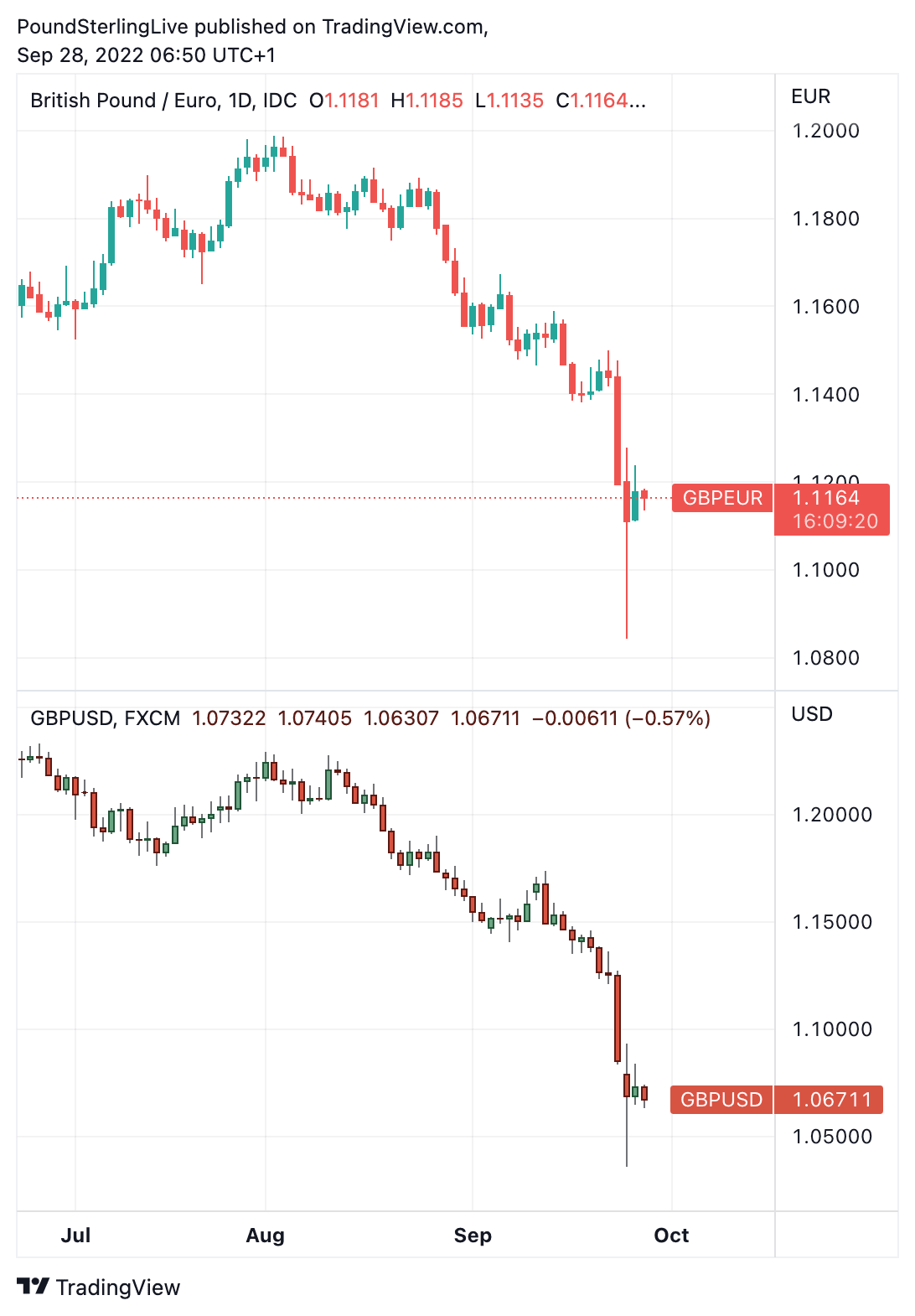Pound Sterling Back Under Pressure against Euro & Dollar Amidst Renewed Market Selloff
- Written by: Gary Howes
-

Image © Adobe Images
A renewed decline in global markets has put fresh pressure on the British Pound and all indications are further losses are likely, potentially resulting in a retest of recent lows.
A fall in global markets overnight was sparked by the release of better-than-expected data out of the U.S., which in turn prompted investors to bet the Federal Reserve might be forced into accelerating the pace at which it hikes interest rates.
Expectations for higher rates hit stock markets and boosted the Dollar, in turn pressuring sensitive currencies, such as the Pound.
The Pound is strongly correlated with risk and tends to fall when global markets are in retreat.
"Soaring interest rates are essentially gravity for financial markets. When rates move higher, riskier assets come under selling pressure as investors dial back their risk-taking behaviour in favour of more conservative plays. It makes no sense to gamble on some risky trade if an investor can suddenly earn a decent risk-free return," says Marios Hadjikyriacos, Senior Investment Analyst at XM.com.
The Pound to Euro exchange rate fell to 1.1144, having been as high as 1.1238 on Tuesday.
The Pound to Dollar exchange rate fell to 1.0657, having been as high as 1.0838 earlier in the day.
Above: GBP/EUR (top) and GBP/USD (bottom) at daily intervals. To stay on top of the market set your own free FX rate alert here.
Triggering the retreat in Sterling and other risk-sensitive assets was the release of new orders for durable goods data, showing a dip of 0.2% in August, but this was better than the consensus expectation for a decline of 0.3%.
The Fed will be further emboldened to raise interest rates as sales of new homes surged 28.8% in August to 685K, this despite the Fed funds rate having already been raised to 3-3.25%.
Topping off the flush of better-than-expected data the index of consumer confidence rose 4.2% in September, marking the second consecutive increase and easily exceeding the expected gain of 1.3%.
As the U.S. raises interest rates the cost of finance rises on a global level, pressuring the world's economy into a slowdown.
The rising Dollar provides an additional headwind, making it harder for many countries and companies to repay debt raised in dollars.
But the strong Dollar is also inflationary: think of the added inflationary pressures Europe and the UK face as their currencies depreciate against the greenback.
The cost of imported goods, commodities and services all rise in local-currency terms, which is particularly harmful in an energy crisis: both the UK and EU are net importers of energy.
In short, the U.S. is exporting its inflation to the detriment of the rest of the world.
These difficult market conditions come as the UK desperately tries to convince investors to invest in its public debt to finance government spending.
The inflow of capital this creates is meanwhile crucial in supporting the value of Sterling.
Remove these flows and the Pound is left without support.
With investors facing increasingly difficult global circumstances inflows into Sterling assets becomes increasingly hard to come by.
This is before we even consider the concerns investors have with the new government's fiscal policy: spending commitments and tax cuts that will be funded by debt have pushed international investors to demand greater compensation for holding UK debt.
This is evident in surging bond yields of both short- and long-term timeframes, which is in turn raising mortgage rates and promising a sharp slowdown in the UK housing market over coming months.
The outlook for the Pound remains difficult and further losses are likely.
"The pound hit new record lows against the dollar this week, becoming the shining example of what happens when an economy’s twin deficits widen uncontrollably through a trade shock and unfunded tax cuts, while rising interest rates exacerbate the debt burden," says XM.com's Hadjikyriacos.














